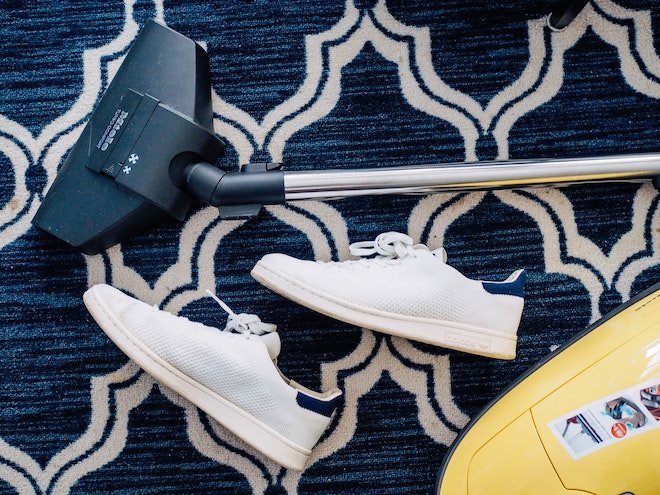Besides the one-third of our year spent at work, the majority of our time is spent in our homes. According to the American Time Use Survey, households spend 8.5 hours sleeping, almost 6 hours watching television, and between 2 and 2.6 hours on household activities like cleaning cooking or tidying. That is a lot of time spent in our homes – and ample opportunities to be exposed to allergens in the house. Over 50 million Americans live with allergies every year. The majority of allergies are triggered by indoor air quality and the presence of indoor allergens. According to the Environmental Protection Agency, indoor pollutants can be 2-5 times higher in U.S. homes than outdoor pollutants, making it essential to practice great everyday habits in your home to minimize these allergens and avoid triggering allergies.
Don’t Just Clean: Ventilate To Avoid Dampness And Humidity
A recent study found that over 50 percent of homes in the U.S. and Canada had the presence of damp and mold. Humidity and moisture in homes is the crucial ingredient for the growth of mold spores – a dangerous and common indoor allergen. The best answer to avoiding this? Ventilation. Be sure to open the windows and doors of your home regularly, and particularly in areas where moisture can build up, like the kitchen, shower and bathroom. Make it a habit to open the window for 5-10 minutes after each shower to allow built-up steam and moisture to escape.
You can also invest in an indoor humidifier monitor such as AcuRite’s 00326 model or the Adoric Life. These gadgets can help you measure your home’s temperature and humidity levels, giving you a heads up when they exceed the recommended level. According to expert recommendation, the humidity in a home should be between 30 and 50 percent and should not exceed 60 percent. Dehumidifiers can also help with reducing moisture and molds. If you do notice the growth of any mold spores, be sure to remove them immediately using mold cleaners.
Don’t Forget The Couch And Curtains
Fabrics are notorious for attracting dust and other indoor allergens. Therefore, when you are vacuuming, don’t forget to include the couch and curtains, using the handy crevice tool and upholstery attachments that are often included with your vacuum. Also remember to utilize the crevice tool to lift dust from your skirting boards, and when choosing your curtains or upholstery fabrics, opt for natural instead of synthetic materials. They are easily washable and do not irritate allergies.
Keep Your Home Decluttered
Another major indoor allergen trigger is dust mites. Around 8 in 10 people are exposed to dust mites, and their presence can cause common hay fever symptoms like a runny nose or itchy eyes. Unfortunately, dust mites are attracted to surfaces, so a build-up of clutter or unused furniture is conducive to their existence in your home. To address this, practice regular decluttering challenges (possibly with every season or every monthly home deep clean). Keep your rooms free of clutter and choose your flooring wisely.
If you do opt for carpeted floors, low pile carpets are a better option. Alternatively, you can opt for removable rugs or carpets you can clean regularly. Household Advice recommends using a carpet cleaner to get maximum benefit each time you do clean your carpet, ideally once every 6 months. You also want to wash your rugs in hot water, if possible.
Vacuum Once A Week
Vacuuming regularly can help to remove any lingering indoor allergens that can irritate your allergies. While many recommend keeping your windows and doors closed during high pollen times, there will also be times where you may choose to open them for ventilation. During these times, outdoor allergens may also enter and settle in your home alongside other existing indoor allergens such as dust mites. The frequency you choose to vacuum will ultimately depend on your habits and whether the area is high traffic. However, you should aim to vacuum at least once a week. You also want to opt for a vacuum with a HEPA filter since they claim to remove 99.9 percent of the allergens.
Simple changes to your home maintenance routine can make a world of difference in managing the allergens in your home. With over 90 percent of time spent in the home, you may not be able to eliminate your exposure to indoor allergens, but you can certainly drastically reduce them




